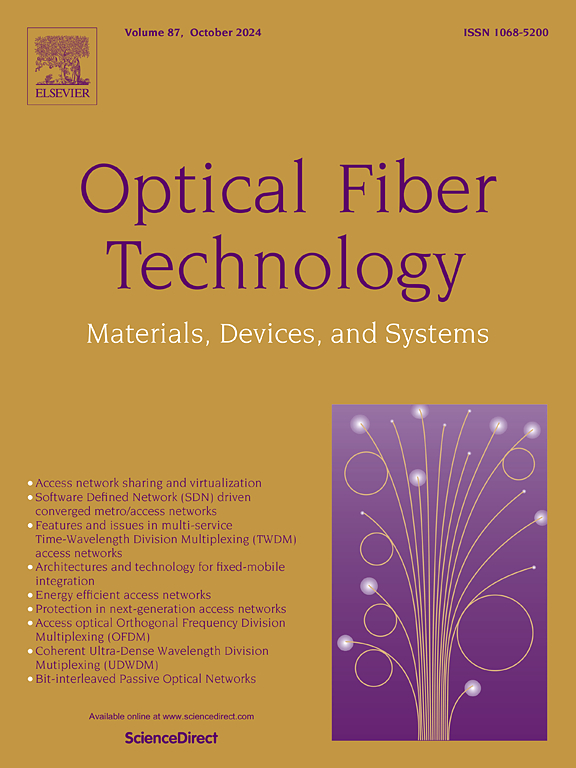A comparison between black-, gray- and white-box modeling for the bidirectional Raman amplifier optimization
IF 2.6
3区 计算机科学
Q2 ENGINEERING, ELECTRICAL & ELECTRONIC
引用次数: 0
Abstract
Designing and optimizing optical amplifiers to maximize system performance is becoming increasingly important as optical communication systems strive to increase throughput. Offline optimization of optical amplifiers relies on models ranging from white-box models deeply rooted in physics to black-box data-driven and physics-agnostic models. Here, we compare the capabilities of white-, gray- and black-box models on the challenging test case of optimizing a bidirectional distributed Raman amplifier to achieve a target frequency-distance signal power profile. We show that any of the studied methods can achieve similar frequency and distance flatness of between 1 and 3.6 dB (depending on the definition of flatness) over the C-band in an 80-km span. Then, we discuss the models’ applicability, advantages, and drawbacks based on the target application scenario, in particular in terms of flexibility, optimization speed, and access to training data.
双向拉曼放大器优化的黑盒、灰盒和白盒建模比较
随着光通信系统努力提高吞吐量,设计和优化光放大器以最大化系统性能变得越来越重要。光放大器的离线优化依赖于各种模型,从扎根于物理学的白盒模型到数据驱动的黑盒模型和物理不可知模型。在此,我们比较了白盒、灰盒和黑盒模型在优化双向分布式拉曼放大器以实现目标频率-距离信号功率分布的挑战性测试用例中的能力。我们的研究表明,在80公里的跨度内,任何一种研究方法都可以在c波段上获得1到3.6 dB(取决于平坦度的定义)的相似频率和距离平坦度。然后,我们根据目标应用场景讨论了模型的适用性、优缺点,特别是在灵活性、优化速度和对训练数据的访问方面。
本文章由计算机程序翻译,如有差异,请以英文原文为准。
求助全文
约1分钟内获得全文
求助全文
来源期刊

Optical Fiber Technology
工程技术-电信学
CiteScore
4.80
自引率
11.10%
发文量
327
审稿时长
63 days
期刊介绍:
Innovations in optical fiber technology are revolutionizing world communications. Newly developed fiber amplifiers allow for direct transmission of high-speed signals over transcontinental distances without the need for electronic regeneration. Optical fibers find new applications in data processing. The impact of fiber materials, devices, and systems on communications in the coming decades will create an abundance of primary literature and the need for up-to-date reviews.
Optical Fiber Technology: Materials, Devices, and Systems is a new cutting-edge journal designed to fill a need in this rapidly evolving field for speedy publication of regular length papers. Both theoretical and experimental papers on fiber materials, devices, and system performance evaluation and measurements are eligible, with emphasis on practical applications.
 求助内容:
求助内容: 应助结果提醒方式:
应助结果提醒方式:


